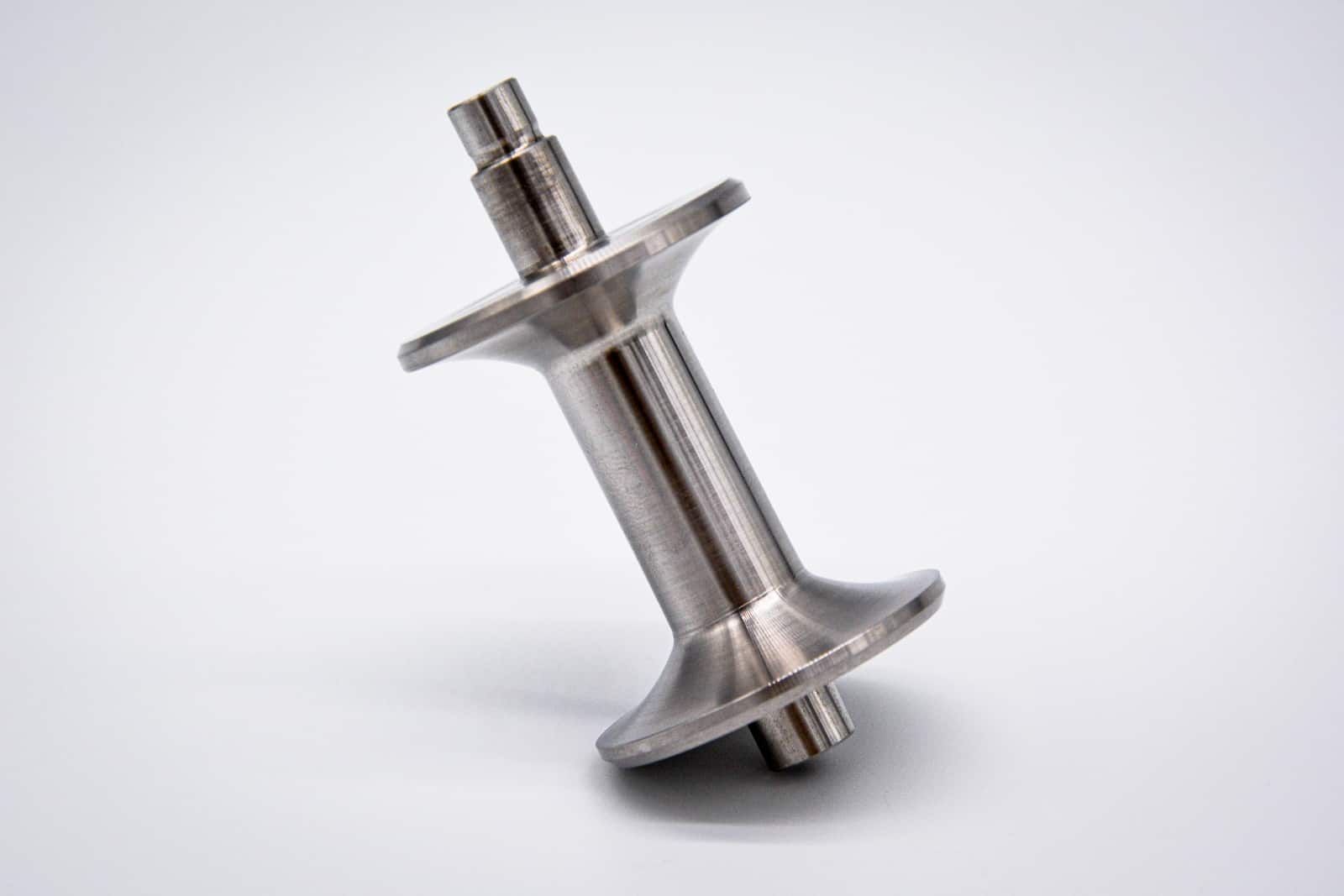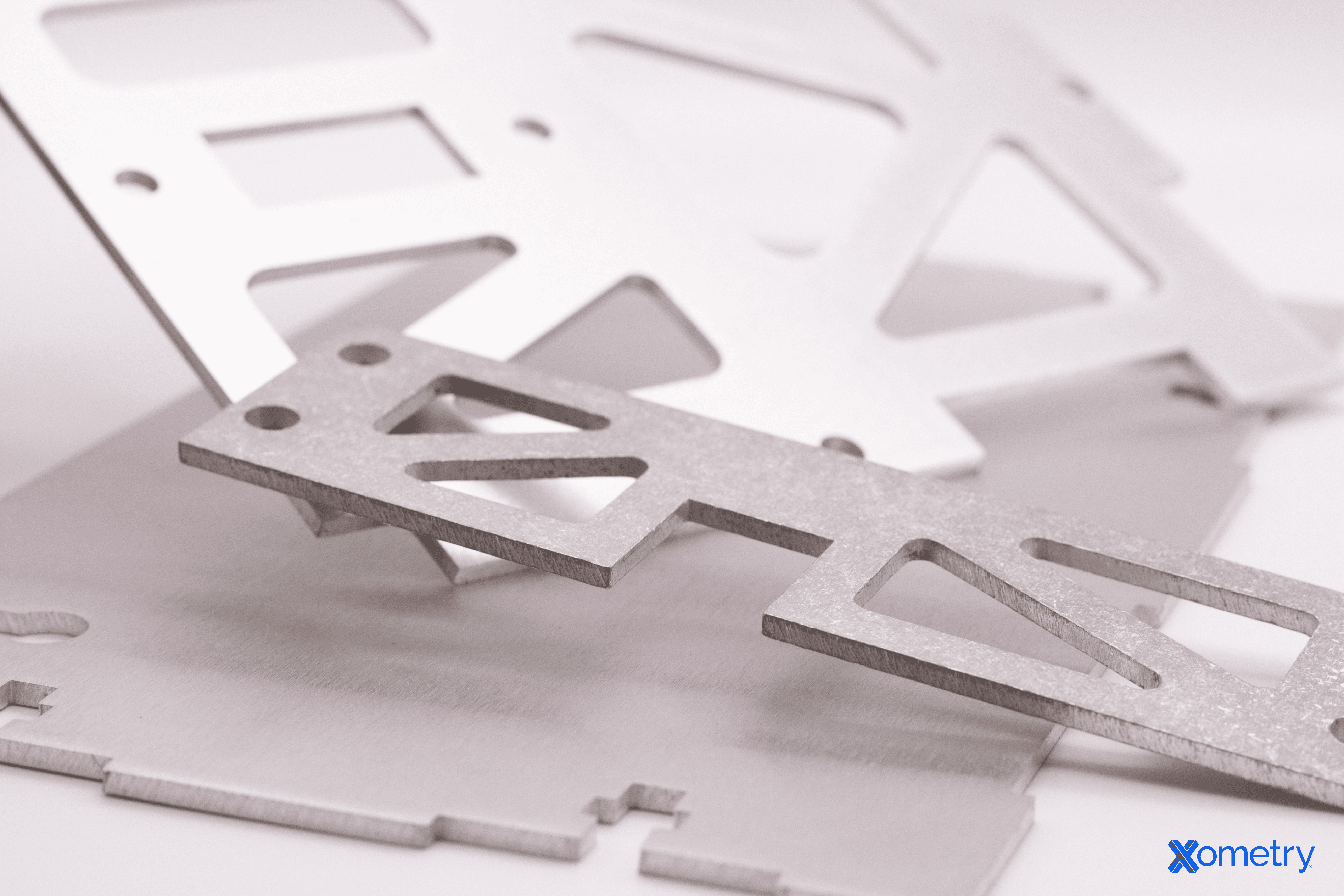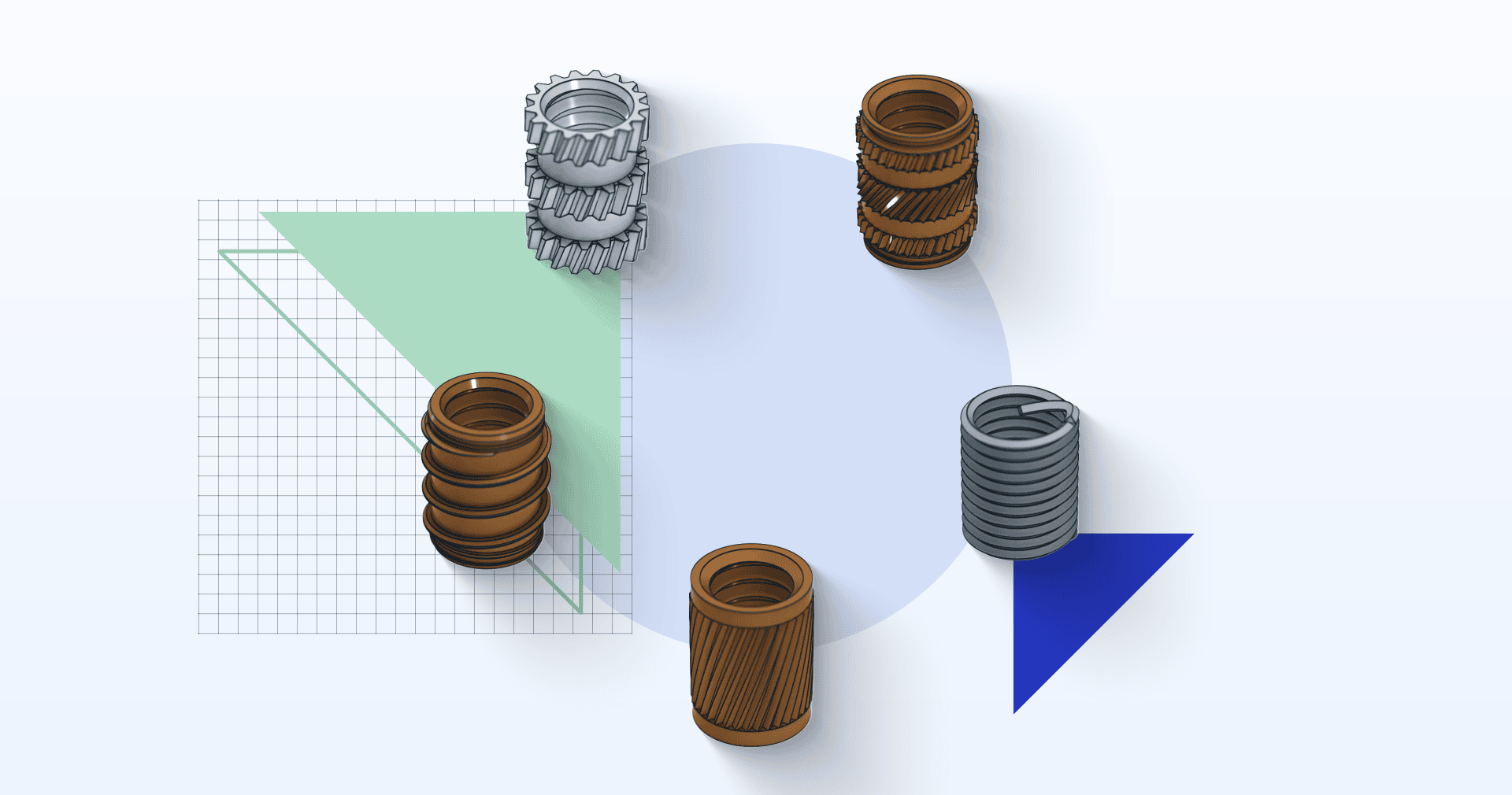Whether you’re looking for a lightweight but strong material or something that can withstand high temperatures, you will be able to find suitable materials for die casting among the most common aluminium, zinc and magnesium alloys listed below.
Die Casting Materials and Their Properties
| Type of alloy | Materials | Properties |
| Aluminium | AC 46100 | Affordable, non-corrosive, low melting point, and excellent weldability |
| Aluminium | AC 46500 | High ductility and strength-to-weight ratio. Suitable for automotive and electrical parts |
| Aluminium | ADC 12 | High melting point, expensive, and corrosion-resistant |
| Aluminium | ADC 10 | Anti-soldering, excellent machinability and strength, affordable |
| Aluminium | A380 | Easy to machine, high ductility, and resistance against wear |
| Aluminium | A383 | Heat treatable, good machinability and castability |
| Aluminium | A360 | High strength, corrosion resistant, soft, and ductile |
| Aluminium | Al-Si8Cu3 | High strength, good electrical conductivity, and suitable for the aerospace industry |
| Aluminium | Al-Si11Cu3 | Good electrical conductivity and strength, resistant against corrosion, and easy to machine |
| Zinc | Zamak 2 | Low melting point, good ductility, and suitable to manufacture complex shape parts |
| Zinc | Zamak 3 | Good dimensional stability, easy to machine, suitable to manufacture gears, toys, and electrical components |
| Zinc | Zamak 4 | High melting point, ideal for manufacturing engine parts, and low coefficient of thermal expansion |
| Zinc | Zamak 5 | Excellent impact strength, castability, and ductility |
| Zinc | Zamak 7 | Low melting point, excellent fluidity, and dimensional stability |
| Magnesium | AZ91D | Suitable for automotive, aerospace, and electronics industries. Good castability and strength-to-weight ratio |
| Magnesium | AM60B | Low density, lightweight, and good stiffness |
| Magnesium | AS41B | Non-toxic, high melting point, excellent electrical conductivity |
Die Casting Materials Available at Xometry
Here are some of the widely used materials by Xometry for the die casting manufacturing process:
| Material | Alternative designations | Tensile strength [MPa] | Elongation at break [%] | Hardness |
| Aluminium 46100 / ADC 12 / A383 / A360 / Al-Si11Cu3 | – | 310 | 3.5 | 75 |
| Aluminium 46500 / ADC 10 / A380 / Al-Si8Cu3 | – | 317 | 2.5 | 80 |
| Zamak 2 | ZnAl4Cu3 | 359 | 7 | 100 |
| Zamak 3 | ZnAl4 | 283 | 10 | 82 |
| Zamak 4 | – | 317 | 7 | 86 |
| Zamak 5 | ZnAl4Cu1 | 328 | 7 | 91 |
| Zamak 7 | ZnAl4Ni | 283 | 13 | 80 |
Aluminium Alloys for Die Casting
Aluminium is one of the most popular materials used in die casting as it offers a good balance of strength and weight. It’s also resistant to corrosion and affordable, making it an excellent choice for outdoor applications.
However, aluminium does have a lower melting point than other materials, so it’s not suitable for high-temperature applications. Some of its alloys ideal for die casting are discussed below.
AC 46100
AC 46100 is an aluminium alloy that’s widely used for die casting. It offers good weldability, strength, and hardness. This alloy also has excellent resistance to corrosion and wear, making it a good choice for applications that require these properties.
However, AC 46100 is not suited for applications that require high temperatures as it has a lower melting point.
AC 46500
AC 46500 aluminium alloy is a high-strength aluminium alloy mainly used to produce die cast parts. Its properties include high ductility, good corrosion resistance, and a high strength-to-weight ratio.
Typical AC 46500 aluminium alloy applications include automotive parts, electrical components, and industrial machinery. It is also often used in aerospace due to its high strength and corrosion resistance.
ADC 12
ADC 12 offers good weldability and corrosion resistance in die cast parts. It also has a higher melting point than AC 46100, making it a better choice for high-temperature applications. However, this alloy is not as strong as AC 46100 and is more expensive.
ADC 10
ADC 10 is the most commonly used aluminium alloy for die casting precisely machined parts. ADC 10 die cast parts possess high durability, strength, and versatility. This grade is also popular due to its anti-soldering properties and excellent machinability. Automotive, sports equipment, electronics, toys, printer parts, and instruments are some of the most common applications of ADC 10.
A380
A380 aluminium alloy offers high strength and ductility, making it an ideal choice for various applications. It also has excellent resistance to corrosion and wears, making it a good choice for die castings that will be exposed to harsh conditions.
In addition, A380 is easy to machine and can be welded and repaired. Some of the most common uses for A380 aluminium alloy include engine blocks, transmission cases, and structural components.
A360
This aluminium grade is generally used for parts that require excellent fluidity and pressure tightness. Products manufactured using A360 aluminium alloy possess high tensile strength and corrosion resistance even at high temperatures. This grade is more ductile than most aluminium alloys and is mainly used to manufacture parts for high-impact applications.
Al-Si8Cu3
Al-Si8Cu3 aluminium alloy is a high-strength, corrosion-resistant material that is often used to produce die-cast parts for the aerospace industry. It has a low density and high strength-to-weight ratio. Al-Si8Cu3 also has excellent resistance to fatigue and crack growth. In addition, the alloy’s low thermal expansion coefficient makes it ideal for use in high-temperature applications.
Al-Si11Cu3
The composition of Al-Si11Cu3 is aluminum (Al) – 90.5%, silicon (Si) – 10.0%, copper (Cu) – 3.0%. With a tensile strength of 310 MPa and a melting point of 577°C, it offers good castability and is easy to machine. Al-Si11Cu3 is used in the automotive industry for wheels and other parts that require high strength and good corrosion resistance. It is also used in the electrical and electronics industries for connectors and other parts that need good electrical conductivity.
Zinc Alloys for Die Casting
Zinc is a strong and durable material often used for small die castings. It provides high-quality surface finishing and has a high melting point, making it ideal for high-temperature applications.
However, zinc is also relatively brittle and can be susceptible to corrosion.
Zamak 2
Zamak 2 is a zinc-based alloy that is specially used to manufacture small die cast parts. It has a relatively low melting point of only 427 degrees Celsius. It also has good ductility and can be easily cast into complex shapes.
This zinc alloy is typically used for making small, intricate parts such as model railway components and costume jewellery. The alloy can also be used for larger parts such as door handles and light fixtures.
Zamak 3
It is an inexpensive alternative to other metals and has several benefits. For example, it is highly corrosion resistant, making it ideal for outdoor applications. In addition, the metal has a low melting point, making it easier to work with. Zamak 3 has good dimensional stability, meaning that it holds its shape well under stress.
The metal is also relatively strong and hard, making it suitable for use in various industries. Some of the most common uses of this zinc alloy include electrical components, gears, toys, and door handles.
Zamak 4
It has good mechanical properties and a high melting point, making it ideal for engine parts, power tools, and hand-held electronics. The alloy is also corrosion resistant and has a low thermal expansion coefficient, which helps prevent warping during the casting process. Zamak-4 has a composition of 97.5% zinc, 2% aluminum, 0.3% copper, and 0.2% magnesium.
The addition of aluminium gives the alloy a higher melting point and greater strength than pure zinc. The copper and magnesium improve the casting properties of the alloy and give it a more malleable, or pliable, quality.
Zamak 5
Zamak-5 is a versatile zinc alloy that can be used in a variety of applications due to its good mechanical properties and castability. It is composed of 97% zinc and 3% aluminium, and it is known for its high ductility and impact strength.
This alloy has a 7.1 g/cm3 density and a 310 MPa tensile strength. Its thermal conductivity is 116 W/m-K. Applications for Zamak-5 include automotive parts, electrical components, and consumer goods.
Zamak 7
A high-strength zinc alloy, Zamak-7 is perfect for die casting. With a lower melting point than other alloys, it is easier to cast and has excellent fluidity. This makes it ideal for complex parts with intricate details. It also has good dimensional stability and resistance to corrosion.
Parts made with this zinc alloy include gears, levers, knobs, and handles. It has a composition of 97% zinc, 3% aluminum, and 0.2% copper. Its thermal conductivity is the same as Zamak-5.
Other than these, some other zinc alloys, such as ZA-8, ZA-12, and ZA27, are also extensively used in the die casting industry.
Order Die Cast Parts
As a leading on-demand manufacturer, Xometry offers die casting services using the latest technology and state-of-the-art equipment. If you wish to order die cast parts, upload your CAD files to the Instant Quoting Engine and get a quote for your project within 48 hours.
 Europe
Europe  Türkiye
Türkiye  United Kingdom
United Kingdom  Global
Global 

 Login with my Xometry account
Login with my Xometry account  0
0









Comment(0)